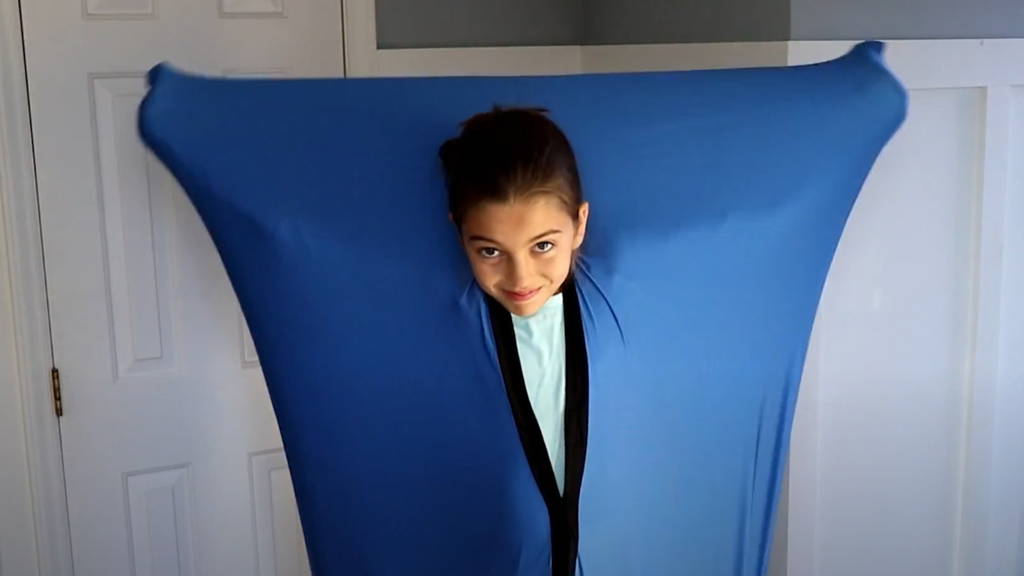What is Sensory Processing Disorder and What Does it Mean?
Sensory Processing Disorder (SPD), or often just called Sensory Disorder, is a neurological condition where the brain struggles to properly use input from the senses.
Lots of kids are born with SPD, and many- but not all of them- are on the autism spectrum.
Sensory Processing disorder is a little-known, under-discussed phenomenon. Until recently, science has not really dug into the subject. Parents who are just discovering it will often run into a noticeable lack of good resources online, to make the journey as a sensory parent easier.
In this blog, we’ll break down and explain all the most important things about Sensory Processing Disorder, and help you understand everything.
What Does it Mean to Have SPD?
A person with Sensory Processing Disorder has problems when it comes to using the information that their senses gather.
SPD is NOT an indicator of any psychological, emotional, or intellectual deficiency in any way, whatsoever. It’s purely about their brain’s ability to use sensory information.
In other words, their hearing might work just fine, but their brain could struggle to grasp the meaning of the sounds. Their vision might be 20/20, but their brain might not be able to really understand what it sees.
Certain types of sensory stimulation, or lack of stimulation, can be very distressing to those with SPD.
What Are the Senses? It’s Not as Obvious as it Seems

We all know about the five main senses: sight, hearing, smell, touch, and taste. However, there are some other lesser-discussed senses that can be affected by SPD. The major ones include:
- Sense of balance: Measured by the vestibular system, this is how you can close your eyes, and still know exactly what position your arms and legs are in, relative to gravity.
- Body Awareness: This is scientifically known as ‘proprioception’- it helps in the understanding of where one’s limbs are, in relation to surroundings
- Interoception: This means internal bodily cues, like hunger, fatigue, need to use the bathroom.
Children with Sensory Disorder might have a poor perception of their own strength, and not know how to use the correct amount of force. They might snap a pencil in half while drawing, or accidentally play a little too rough with others.
They might soil themselves because they don’t quite understand that they need to use the restroom, or try to eat too much- because they don’t get the brain signal that tell them when they’re full.
Between all the different senses, and the different types of SPD, there are many different ways that people can be affected- regardless of age. The effects can seem to be random, and vary from person to person.
One of the most common, and outwardly dramatic, effects of SPD is a sensory meltdown.
What’s a Sensory Meltdown?
A sensory meltdown might also be quite the opposite from that. Sometimes, a child will suddenly become quiet, reserved, reclusive, with onset shaking or crying. They may not communicate during the meltdown, or even be able to.
A sensory meltdown can seem like a temper tantrum- ranging from things like running and screaming, crying, hitting things, and rolling around on the ground. Onlooking strangers may make the mistake of assuming that the child is “misbehaving”- but we have to know better. When children get overwhelmed by some of these kinds of sensory inputs- or, if they are underwhelmed by insufficient input- they can suffer what’s known as a sensory meltdown.
The most important thing to keep in mind is that a sensory child is not misbehaving when they have a sensory meltdown- whatever the cause. They aren’t acting out- they’re crying out, because their own brain simply was not designed to handle their surroundings!.
Sensory children deserve as much patience, understanding, and loving support as we can give them.
A sensory meltdown should be treated by quickly removing the child from whatever environment was distressing them, and triggered the meltdown.
Depending on the type of sensory needs of your child, the specific treatment may vary, at that point.
The Two Types of People with SPD: Sensory Seekers, and Sensory Avoiders
What is a Sensory Avoider?
A sensory avoider has a very low tolerance to sensory input. Sometimes, it only takes a little bit of stimulation to overwhelm them, and trigger a meltdown. Because of this, they will often shy away from loud areas, crowds, bright places, or other environments that are rich in sensory input.
When a sensory avoider has a meltdown, it’s always a good idea to get them away from the triggering environment. Get them to somewhere dimly lit, quiet, secluded, and relaxing. You’ll probably want to be with them, to comfort them, and let them get all the rage out of their system, and they’ll settle down.

What is a Sensory Seeker?
A sensory seeker is pretty much the opposite. They’ve got a very high need for lots of sensory data, and will often go to great lengths to get it.
If a sensory seeker has a meltdown, it can be effective to squeeze them, or let them put on something tight and heavy. They also might enjoy music, or something sour to eat. Sensory seekers typically crave more sensory input, because their brain needs a lot of input in order to process it. They’ve got a higher pain tolerance, and will often do things like hurling themselves against objects, hitting things, screaming, chewing, and making loud noises.
Some children can be either seekers or avoiders, depending on the situation. All children are unique, and there is no cookie cutter formula- at the end of the day, it comes down to loving patience, coupled with professional guidance and helpful sensory tools.
Closing Thoughts and Solutions

Being a parent to a sensory kid can be challenging sometimes- but there’s always hope, there’s always a brighter future, and there are plenty of ways to treat the condition. Science is beginning to understand it, and there are a load of great treatment options.
The best long-term solution is occupational therapy, focusing on sensory processing. Occupational therapists understand many of the root causes of- and solutions to- sensory problems. They can work with each individual child, and work out a plan to treat their own specific case.
There are other helpful treatments that can work for children, teens, or adults. These include speech therapy, physical therapy, and ABA (Applied Behavioural Analysis) studies.
Being a sensory parent isn’t always easy. Sometimes, it can honestly get pretty exhausting and emotionally draining. However, there’s always progress to be made.
However, it’s never a hopeless battle. Treatment is proven to help, and there are a variety of products that can help sensory seekers, and sensory avoiders.
When it comes to developing your children, and providing the happy life they deserve, you’ll do whatever it takes- and we’ll be here to help every step of the way.
TOP SENSORY SOLUTION FOR SENSORY SEEKERS AND SENSORY AVOIDERS
"Our daughter is very very energetic and very sensitive to noise. I decided to try the sensory cocoon to see if it would help ground her.
With we received it she put it on and we could see the calming effect almost immediately! Within an hour she drew this picture of her mother and baby brother, and herself in the cocoon.
Its not a magic bullet, and we are still learning how to incorporate it into her daily life, but it has become a great tool to help give her a safe place to calm her body."
- John M.
"We LOOOVE our ear buddies. Well our ASD son does! He has anxieties with loud and crowded places. We tried his ear buddies headphones when we went out to eat and they worked phenomenal for him. In our eyes they where completely life changing. He did not have a sensory meltdown and he was in his own world. Where the noises and crowds where blocked out."
- Christopher W.
 Skip to content
Skip to content

